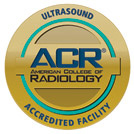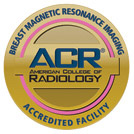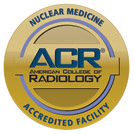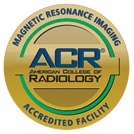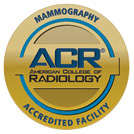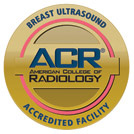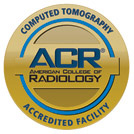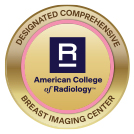MR angiography (MRA) uses a magnetic field, radio waves and a computer to examine the body’s blood vessels for abnormalities. The exam involves gadolinium-based contrast dye rather than radiation, so patients are less likely to experience an allergic reaction.
What Is MR Angiography?
MR angiography examines the blood vessels for multiple diseases and takes images of all major blood vessels through the body. For clearer images, gadolinium-based contrast dye administered through an IV may be needed.
The procedure makes use of magnetic resonance imaging (MRI) technology, which features a cylinder-shaped tube with a magnet at the center. The patient will pass through the center. With more modern MRI systems, also known as short-bore or open MRIs, the magnet does not fully surround the patient, so the system is not completely enclosed.
In all cases, MRI technology does not use radiation – a benefit over X-ray and computed tomography (CT) imaging technologies. Instead, the unit creates a magnetic field.
Coils, placed throughout the machine or near the area being observed, give off and receive radio waves, generating a signal the machine identifies. When this occurs, the radio waves line up with the body’s hydrogen atoms, which then return to their natural positions.
As the atoms move, they give off variable amounts of energy, based on the tissue and condition. The scanner’s magnetic field traps this energy to generate a cross-sectional image of the blood vessels being examined. A radiologist sitting in a separate room observes the images coming in on a computer screen.
If a contrast dye is used, it turns the blood vessels bright white, allowing for a greater degree of clarity. Overall, the MRI technology used in an MR angiography provides more contrast and greater detail between normal and diseased tissue, compared to other scans.
The magnetic field is generated by an electrical current passing through the wire coils. However, the current does not come in contact with the patient. Beyond these points, MR angiography offers several benefits:
- It’s noninvasive and allows the patient to return to their normal daily activities after.
- The catheter used can be inserted into a small vein – not a large blood vessel. This reduces the risk of damaging the blood vessel.
- It’s not as expensive as other angiography procedures.
- The procedure still offers a high level of detail even without contrast dye, making it ideal for those who experience allergic reactions.
Nevertheless, the procedure comes with a few risks:
- It involves a strong magnetic field, which can affect implanted medical devices or other metal objects in the body. These objects are known to affect image quality.
- MR angiography can’t capture calcium deposits in the blood vessels and isn’t always ideal for small blood vessels and certain arteries.
- Pregnant women should avoid having an MR angiography procedure during the first trimester of their pregnancy.
Who Should Have This Procedure?
Doctors typically request this procedure to examine the blood vessels in the brain, neck, chest, abdomen, pelvis, legs, feet, arms, hands or heart for abnormalities. Specifically, MR angiography may assist with diagnosing:
- Aneurysms or an arteriovenous malformation (AVM)
- Atherosclerotic and other plaque diseases
- Disease progression from the arteries to the kidneys
- Trauma-related injuries to the arteries
- Tumors fed by the arteries
- Dissection or splitting in the aorta
- Congenital abnormalities in the blood vessels
- Arterial disease
- Stenosis or obstructions of vessels
As such, MR angiography helps determine if a patient needs to undergo:
- Endovascular intervention or surgery
- Kidney transplant
- Stent placement
- Stent implantation
- Chemoembolization
- Selective internal radiation therapy
MR angiography is not ideal for all patients. Your doctor may recommend a different imaging procedure if:
- You have an implanted medical device, such as a clip for a brain aneurysm, coil in a blood vessel, a cochlear implant or an older-model pacemaker or defibrillator. It’s recommended you inform your doctor and radiologist of this device, so they can confirm and document its MRI compatibility.
- You have a metal object somewhere in your body – especially if it’s close to the eyes. Inform your doctor if your body contains a shrapnel, iron-containing tattoo dye, braces or permanent makeup somewhere. These can heat up, resulting in additional injuries, including blindness. If you’re unsure, an X-ray scan can detect the presence of any foreign metal bodies.
Preparation
Prior to scheduling the procedure, patients are advised to tell their doctor about any health problems or medical procedures, including any recent surgeries, allergies, medications you currently take, or if you are or think you may be pregnant. Patients who have kidney or liver disease or who are allergic iodine or gadolinium should not receive the contrast dye IV.
Generally, most patients can eat and drink as normal before their exam, unless a doctor provides you with a specific set of directions. If you’re claustrophobic, your doctor may have you take a sedative prior to the exam.
- Patients will be asked to change into provided clothing prior to MRI.
- Items include watches, pins, credit cards, hearing aids, zippers on clothing, removable dental work, eyeglasses, piercings, cell phones and tracking devices.
MR angiography is done in an outpatient setting. As the procedure begins, patients will be positioned on the table that will pass through the center of the MRI machine, possibly with straps or pillows to help you stay in place. The radiologist may place the coils near the part of the body being observed.
Prior to the procedure, an IV will be typically inserted in your arm or hand. The injection of contrast will be delivered during the MRI and the technologist will let you know when it will happen. Some patients report a bit of discomfort, light bruising or irritation at the injection site and might briefly have a metallic taste in their mouth.
You’ll be alone in the imaging room, with the technologist communicating with you via a two-way intercom from an adjacent room.
As a note, MR angiography involves multiple sequences, each of which lasts several minutes. As the scan begins and you’re placed under the magnet, the part being imaged may feel slightly warm.
Additionally, the machine’s coils will create a tapping or thumping sound as they generate the radio waves and you may be provided with earplugs or headphones to reduce the noise. While you can relax between sequences, it’s advised you stay in the same position.
After all passes have been taken, the radiologist confirms the images are of satisfactory quality and the IV will be removed. Unless you were sedated, you can resume all day-to-day activities once the exam is over.
Keep watch for any potential side effects from the contrast dye, including nausea, headaches, pain at the injection site, hives or itchy eyes. If you’re experiencing an allergic reaction, seek medical attention immediately.
Following the procedure, the radiologist will review all images with your doctor, who may schedule a follow-up visit or imaging procedure.
Has your doctor recommended an MR angiography? Contact us to make an appointment today!





